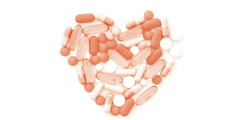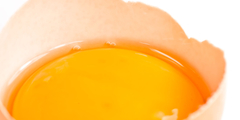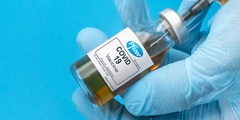
Herstel en regeneratie begint met alle basisprincipes die
gelden voor bescherming van de lever, en eigenlijk het gehele
lichaam (zie deel 1). Het is duidelijk dat preventie veruit de
voorkeur verdient, door van jongsaf aan gezond te leven, want
regeneratie kan een langdurig proces zijn. Bovendien daalt de
regeneratieve capaciteit van de lever bij het verouderen.
Beste bezoeker, u heeft geen toegang.
Enkel (web)abonnees hebben toegang tot tijdschriftartikelen. Het webabonnement is nog in de maak.
U kunt zich wel alvast (gratis) registreren en tal van andere webartikelen raadplegen!
Auteur
Verschenen in
Referenties
Pruimboom L. De lever/pancreas/resistenties binnen de klinische PNI. Bachelor cursus cPNI, 2e jaar 2011.
Huang J, Rudnick DA. Elucidating the metabolic regulation of liver regeneration. Am J Pathol. 2014 Feb;184(2):309-21.
Kuipers R. De rol van gezonde voeding in de preventie van welvaarts- en ouderdomsziekten. AT&A 2012; 5:38-43.
Mattei J et al, Global Nutrition Epidemiologic Transition Initiative. Reducing the global burden of type 2 diabetes by improving the quality of staple foods: The Global Nutrition and Epidemiologic Transition Initiative. Global Health. 2015 Jun 4;11(1):23.
Baker P, Friel S. Processed foods and the nutrition transition: evidence from Asia. Obes Rev. 2014 Jul;15(7):564-77.
Kirpich IA, Marsano LS, McClain CJ. Gut-liver axis, nutrition, and non-alcoholic fatty liver disease. Clin Biochem. 2015 Jul 4. pii: S0009-9120(15)00261-1.
Fan JG, Cao HX. Role of diet and nutritional management in non-alcoholic fatty liver disease. J Gastroenterol Hepatol. 2013 Dec;28 Suppl 4:81-7.
Bémeur C, Butterworth RF. Nutrition in the management of cirrhosis and its neurological complications. J Clin Exp Hepatol. 2014 Jun;4(2):141-50.
Basaranoglu M, Basaranoglu G, Sabuncu T, Sentürk H. Fructose as a key player in the development of fatty liver disease. World J Gastroenterol. 2013 Feb 28;19(8):1166-72.
Vos MB, Lavine JE. Dietary fructose in nonalcoholic fatty liver disease. Hepatology. 2013 Jun;57(6):2525-31.
Kechagias S, Ernersson A, Dahlqvist O, et al. Fast-food-based hyper-alimentation can induce rapid and profound elevation of serum alanine aminotranferase in healthy subjects. Gut. 2008 May;57(5):649-54.
Laguna JC, Alegret M, Roglans N. Simple sugar intake and hepatocellular carcinoma: epidemiological and mechanistic insight. Nutrients. 2014 Dec 22;6(12):5933-54.
Nseir W, Nassar F, Assy N. Soft drinks consumption and nonalcoholic fatty liver disease. World J Gastroenterol. 2010 Jun 7;16(21):2579-88.
Abid A, Taha O, Nseir W, Farah R, Grosovski M, Assy N. Soft drink consumption is associated with fatty liver disease independent of metabolic syndrome. J Hepatol. 2009 Nov;51(5):918-24.
Moore JB, Gunn PJ, Fielding BA. The role of dietary sugars and de novo lipogenesis in non-alcoholic fatty liver disease. Nutrients. 2014 Dec 10;6(12):5679-703.
Hu FB. Resolved: there is sufficient scientific evidence that decreasing sugar-sweetened beverage consumption will reduce the prevalence of obesity and obesity-related diseases. Obes Rev 2013 Aug;14(8):606-19.
Erickson J, Slavin J. Total, added, and free sugars: are restrictive guidelines science-based or achievable? Nutrients. 2015 Apr 15;7(4):2866-78.
Grasselli E et al. Effects of binge ethanol on lipid homeostasis and oxidative stress in a rat model of nonalcoholic fatty liver disease. J Physiol Biochem. 2014 Jun;70(2):341-53.
York LW, Puthalapattu S, Wu GY. Nonalcoholic fatty liver disease and low-carbohydrate diets. Annu Rev Nutr. 2009;29:365-79.
Browning JD, Baker JA, Rogers T, Davis J, Satapati S, Burgess SC. Short-term weight loss and hepatic triglyceride reduction: evidence of a metabolic advantage with dietary carbohydrate restriction. Am J Clin Nutr. 2011 May;93(5):1048-52.
Zelber-Sagi S, Ratziu V, Oren R. Nutrition and physical activity in NAFLD: an overview of the epidemiological evidence. World J Gastroenterol. 2011 Aug 7;17(29):3377-89.
Timmer S. Lekkende darm. 2011; 4:54-56.
Timmer S. Darmflora van invloed op energiehomeostase. A&A 2008; 6:45-47.
Van Dam B. Verouderen, Immuunsysteem & darmflora. AT&A 2011; 6: 41-46.
Ferolla SM, Armiliato GN, Couto CA, Ferrari TC. Probiotics as a complementary therapeutic approach in nonalcoholic fatty liver disease. World J Hepatol. 2015 Mar 27;7(3):559-65.
Iacono A, Raso GM, Canani RB, Calignano A, Meli R. Probiotics as an emerging therapeutic strategy to treat NAFLD: focus on molecular and biochemical mechanisms. J Nutr Biochem. 2011 Aug;22(8):699-711.
Solga SF et al. The effect of a probiotic on hepatic steatosis. J Clin Gastroenterol 2008; 42(10)117-9.
Esposito E et al. Probiotics reduce the inflammatory response induced by a high-fat diet in the liver of young rats. J Nutr 2009; 139(5):905-11.
Ritze Y et al. Lactobacillus rhamnosus GG protects against non-alcoholic fatty liver disease in mice. PLoS One. 2014 Jan 27;9(1):e80169.
Fukui H. Gut-liver axis in liver cirrhosis: How to manage leaky gut and endotoxemia. World J Hepatol. 2015 Mar 27;7(3):425-42.
Malaguarnera G, Giordano M, Nunnari G, Bertino G, Malaguarnera M. Gut microbiota in alcoholic liver disease: pathogenetic role and therapeutic perspectives. World J Gastroenterol. 2014 Nov 28;20(44):16639-48.
Michail S et al. Altered gut microbial energy and metabolism in children with non-alcoholic fatty liver disease. FEMS Microbiol Ecol. 2015 Feb;91(2):1-9.
Vajro P, Paolella G, Fasano A. Microbiota and gut-liver axis: their influences on obesity and obesity-related liver disease. J Pediatr Gastroenterol Nutr. 2013 May;56(5):461-8.
Wouters S. Probiotica, Het belang van een gezonde interne tuin. VanNature 2006; 3:10-13.
Hoogland A. Prebiotica. Niet verteerbaar maar essentieel. VanNature 2006; 3:19-21
Wouters S. Glutamine. Veel voorkomend, maar ook vaak deficiënt. VanNature 2006; 3:41-44.
Nys M. Probiotica en de darm: nieuwe gezichtspunten. Verlies aan synergie tussen gal, pancreasenzymen en darmflora AT&A 2011; 4:50-52.
Nys M. De pancreas, van conceptie tot levenseinde. AT&A 2014; 1:13-17.
Nys M. Spijsverteringsenzymen zijn miskend maar essentieel. AT&A 2012; 5:18-23.
Siddiqui MS et al. Nonalcoholic Steatohepatitis (NASH) Is Associated with a Decline in Pancreatic Beta Cell (β-Cell) Function. Dig Dis Sci. 2015 Aug;60(8):2529-37.
Fan M, Wang X, Xu G, Yan Q, Huang W. Bile acid signaling and liver regeneration. Biochim Biophys Acta. 2015 Feb;1849(2):196-200.
Bosma-den Boer, van Wetten ML, Pruimboom L. Chronic inflammatory diseases are stimulated by current lifestyle: … Nutr & metabol 2012; 9:32
Kaliannan K, Wang B, Li XY, Kim KJ, Kang JX. A host-microbiome interaction mediates the opposing effects of omega-6 and omega-3 fatty acids on metabolic endotoxemia. Sci Rep. 2015 Jun 11;5:11276.
Scorletti E, Byrne CD. Omega-3 fatty acids, hepatic lipid metabolism, and nonalcoholic fatty liver disease. Annu Rev Nutr. 2013;33:231-48.
Jump DB. N-3 polyunsaturated fatty acid regulation of hepatic gene transcription. Curr Opin Lipidol. 2008 Jun;19(3):242-7.
Ide T et al. Cross-talk between peroxisome proliferator-activated receptor (PPAR) alpha and liver X receptor (LXR) in nutritional regulation of fatty acid metabolism. II. LXRs suppress lipid degradation gene promoters through inhibition of PPAR signaling. Mol Endocrinol. 2003 Jul;17(7):1255-67.
Gentile CL et al. Fatty acids and the endoplasmic reticulum in nonalcoholic fatty liver disease. Biofactors 2011 Jan-Feb;37(1):8-16.
Ferramosca A, Zara V. Modulation of hepatic steatosis by dietary fatty acids. World J Gastroenterol. 2014 Feb 21;20(7):1746-55.
Ferramosca A et al. A krill oil supplemented diet suppresses hepatic steatosis in high-fat fed rats. PLoS One. 2012;7(6):e38797.
Janczyk W et al. Omega-3 Fatty acids therapy in children with nonalcoholic Fatty liver disease: a randomized controlled trial. J Pediatr. 2015 Jun;166(6):1358-1363.e3.
Parker HM et al. Omega-3 supplementation and non-alcoholic fatty liver disease: a systematic review and meta-analysis. Hepatol. 2012 Apr;56(4):944-51.
Capanni M et al. Prolonged n-3 polyunsaturated fatty acid supplementation ameliorates hepatic steatosis in patients with non-alcoholic fatty liver disease: a pilot study. Aliment Pharmacol Ther. 2006 Apr 15;23(8):1143-51.
Burgess AP et al. Heme oxygenase (HO-1) rescue of adipocyte dysfunction in HO-2 deficient mice via recruitment of epoxyeicosatrienoic acids (EETs) and adiponectin. Cell Physiol Biochem. 2012;29(1-2):99-110.
Schoen Smith JM, Lautt WW. Nitric oxide and prostaglandins potentiate the liver regeneration cascade. Can J Gastroenterol. 2006 May;20(5):329-34.
Hortelano S, Zeini M, Casado M, Martín-Sanz P, Boscá L. Animal models for the study of liver regeneration: role of nitric oxide and prostaglandins. Front Biosci. 2007 Jan 1;12:13-21.
Schoen Smith JM, Lautt WW .The role of prostaglandins in triggering the liver regeneration cascade. Nitric Oxide. 2005 Sep;13(2):111-7.
Jegatheesan P et al. Effect of specific amino acids on hepatic lipid metabolism in fructose-induced non-alcoholic fatty liver disease. Clin Nutr. 2015 Feb 11. pii: S0261-5614(15)00043-6. do [Epub ahead of print]
Dinçer S, Ozenirler S, Oz E, Akyol G, Ozoğul C. The protective effect of taurine pretreatment on carbon tetrachloride-induced hepatic damage--a light and electron microscopic study. Amino Acids. 2002 Jun;22(4):417-26.
Yan SL, Yin MC. Protective and alleviative effects from 4 cysteine-containing compounds on ethanol-induced acute liver injury through suppression of oxidation and inflammation. J Food Sci. 2007 Sep;72(7):S511-5.
Rushwort GF, Megson IL. Existing and potential therapeutic uses for N-acetylcysteine: the need for conversion to intracellular glutathione for antioxidant benefits. Pharmacol Ther 2014 Feb;141(2):150-9.
Atkuri KR et al. N-Acetylcysteine--a safe antidote for cysteine/glutathione deficiency. Curr opin Pharmacol 2007 Aug;7(4):355-9.
N-acetylcysteine. Altern med Rev 2000 Oct;5(5):467-71.
Gentile CL et al. Experimental evidence for therapeutic potential of taurine in the treatment of nonalcoholic fatty liver disease. Am J Physiol Regul Integr Comp Physiol. 2011 Dec;301(6):R1710-22.
Yalçinkaya S et al. Oxidative and nitrosative stress and apoptosis in the liver of rats fed on high methionine diet: protective effect of taurine. Nutrition 2009 Apr;25(4):436-44.
Acharya M et al. Comparative evaluation of the effects of taurine and thiotaurine on alterations of the cellular redox status and activities of antioxidant and glutathione-related enzymes by acetaminophen in the rat. Adv Exp Med Biol 2013;776:199-215.
Jun DW et al. Prevention of free fatty acid-induced hepatic lipotoxicity by carnitine via reversal of mitochondrial dysfunction. Liver Int. 2011 Oct;31(9):1315-24.
Ali SA, Faddah L, Abdel-Baky A, Bayoumi A. Protective effect of L-carnitine and coenzyme Q10 on CCl₄-induced liver injury in rats. Sci Pharm. 2010;78(4):881-96.
Shaker ME, Houssen ME, Abo-Hashem EM, Ibrahim TM. Comparison of vitamin E, L-carnitine and melatonin in ameliorating carbon tetrachloride and diabetes induced hepatic oxidative stress. J Physiol Biochem. 2009 Sep;65(3):225-33. xxx
Nys M. Choline, de vergeten halfvitamine. AT&A 2014; 3:36-41
Kuloglu N et al. A biochemical and immunohistochemical study of the protective effects of carnosine for carbon tetrachloride induced liver injury in rats. Biotech Histochem 2015 May 15:1-7.
Aydin S et al. Effect of carnosine supplementation on apoptosis and irisin, total oxidant and antioxidants levels in the serum, liver and lung tissues in rats exposed to formaldehyde inhalation. Peptides2015 Feb;64:14-23.
Uysal M et al. Effects of carnosine, taurine, and betaine pretreatments on diethylnitrosamine-induced oxidative stress and tissue injury in rat liver. Toxicol Ind Health 2014 Dec 31. pii: 0748233714563432. [Epub ahead of print]
Kalaz EB et al. Carnosine and taurine treatments decreased oxidative stress and tissue damage induced by D-galactose in rat liver. J Physiol Biochem 2014 Mar;70(1):15-25.
Young CS et al. Hydrogen peroxide-mediated Cu,Zn-superoxide dismutase fragmentation: Protection by carnosine, homocarnosine and anserine". Biochim Biophys Acta (BBA) 1999; 1472 (3): 651.
Reddy VP, Garrett MR, Perry G, Smith MA. Carnosine: A Versatile Antioxidant and Antiglycating Agent. Sci Aging Knowl Environ 2005; (18): pe12.
Lan S, Qing-Huan L, Zheng T. L-Carnosine reduces telomere damage and shortening rate in cultured normal fibroblasts. Biochem Biophys Res Comm 2004; 324 (2): 931–6.
Boldyrev AA, Stvolinsky SL, Fedorova TN, Suslina ZA. Carnosine as a natural antioxidant and geroprotector: From molecular mechanisms to clinical trials. Rejuvenation Research 2010; 13 (2-3): 156–8.
Abenavoli L. Non-alcoholic fatty liver disease and beneficial effects of dietary supplements. World J Hepatol. 2015 Jun 28;7(12):1723-4.
Ramírez-Farías C, Morales-Gonzaléz JA et al. Protective effect of some vitamins against the toxic action of ethanol on liver regeneration induced by partial hepatectomy in rats. World J. Gastroenterol. 2008, 14, 899–907.
Zeng W et al. Antioxidant treatment enhances human mesenchymal stem cell anti-stress ability and therapeutic efficacy in an acute liver failure model. Sci Rep. 2015 Jun 9;5:11100.
Chen G. The link between Hepatic Vitamin A Metabolism and Nonalcoholic Fatty Liver Disease. Curr Drug Targets. 2015 Mar 25. [Epub ahead of print]
Yilmaz B et al. Carotenoids and non-alcoholic fatty liver disease. Hepatobiliary Surg Nutr. 2015 Jun;4(3):161-71.
Iruzubieta P, Terán Á, Crespo J, Fábrega E. Vitamin D deficiency in chronic liver disease. World J Hepatol. 2014 Dec 27;6(12):901-15.
Eliades M, Spyrou E. Vitamin D: a new player in non-alcoholic fatty liver disease? World J Gastroenterol. 2015 Feb 14;21(6):1718-27.
Yin Y et al. Vitamin D attenuates high fat diet-induced hepatic steatosis in rats by modulating lipid metabolism. Eur J Clin Invest. 2012 Nov;42(11):1189-96.
Barchetta I et al. Liver vitamin D receptor, CYP2R1, and CYP27A1 expression: relationship with liver histology and vitamin D3 levels in patients with nonalcoholic steatohepatitis or hepatitis C virus. Hepatology. 2012 Dec;56(6):2180-7.
Sato K et al. Vitamin E has a beneficial effect on nonalcoholic fatty liver disease: A meta-analysis of randomized controlled trials. Nutrition. 2015 Jul-Aug;31(7-8):923-30.
Lin M et al. Vitamin K2-enhanced liver regeneration is associated with oval cell expansion and up-regulation of matrilin-2 expression in 2-AAF/PH rat model. Curr Mol Med. 2014 Mar;14(3):361-9.
Yilmaz O, Ersan Y, Dilek Ozsahin A, Ihsan Ozturk A, Ozkan Y. Consequences of the Combined α-tocopherol, Ascorbic Acid and α-lipoic Acid on the Glutathione, Cholesterol and Fatty Acid Composition in Muscle and Liver of Diabetic Rats. Iran J Basic Med Sci. 2013 Feb;16(2):165-72.
Erkekoglu P, Giray BK, Caglayan A, Hincal F. Selenium and/or iodine deficiency alters hepatic xenobiotic metabolizing enzyme activities in rats. J Trace Elem Med Biol. 2012 Jan;26(1):36-41.
Olsson U et al. Effects of selenium deficiency on xenobiotic-metabolizing and other enzymes in rat liver. Int J Vitam Nutr Res. 1993;63(1):31-7.
Nys M. Fytohormese. AT&A 2014; 5:26-33.
Milosević N, Milanović M, Abenavoli L, Milić N. Phytotherapy and NAFLD--from goals and challenges to clinical practice. Rev Recent Clin Trials. 2014;9(3):195-203.
Zeng W et al. Antioxidant treatment enhances human mesenchymal stem cell anti-stress ability and therapeutic efficacy in an acute liver failure model. Sci Rep. 2015; 5:11100.
Jayaraj R, Deb U, Bhaskar AS, Prasad GB, Rao PV. Hepatoprotective efficacy of certain flavonoids against microcystin induced toxicity in mice. Envir Toxicol. 2007;22(5):472-9.
Domitrović R et al. Liver fibrosis in mice induced by carbon tetrachloride and its reversion by luteolin. Toxicol Appl Pharmacol. 2009 Dec 15;241(3):311-21
Stefanson, A.L.; Bakovic, M. Dietary regulation of Keap1/Nrf2/ARE pathway: Focus on plantderived compounds and trace minerals. Nutrients 2014, 6, 3777–3801.
Keum, Y.S.; Choi, B.Y. Molecular and chemical regulation of the Keap1-Nrf2 signaling pathway. Molecules 2014, 19, 100074–100089.
Han X, Shen T, Lou H. Dietary poliphenols and their biological significance. Int. J. Mol. Sci. 2007, 8, 950–988.
Heebøll S et al. Effects of resveratrol in experimental and clinical non-alcoholic fatty liver disease. World J Hepatol. 2014 Apr 27;6(4):188-98.
Andrade JM et al. Resveratrol attenuates hepatic steatosis in high-fat fed mice by decreasing lipogenesis and inflammation. Nutrition. 2014 Jul-Aug;30(7-8):915-9.
Aguirre L, Portillo MP, Hijona E, Bujanda L. Effects of resveratrol and other polyphenols in hepatic steatosis. World J Gastroenterol. 2014 Jun 21;20(23):7366-80.
Zou X et al. Mitochondrial dysfunction in obesity-associated nonalcoholic fatty liver disease: the protective effects of pomegranate with its active component punicalagin. Antioxid Redox Signal. 2014 Oct 10;21(11):1557-70.
Cho EH. SIRT3 as a Regulator of Non-alcoholic Fatty Liver Disease. Lifestyle Med 2014 Sep;4(2):80-5.
Sodhi K et al. Fructose Mediated Non-Alcoholic Fatty Liver Is Attenuated by HO-1-SIRT1 Module in Murine Hepatocytes and Mice Fed a High Fructose Diet. PLoS One. 2015 Jun 22;10(6):e0128648.
that HO-1 induction attenuates fructose-induced hepatic lipid deposition, prevents the development of hepatic fibrosis and abates NAFLD-associated vascular dysfunction; effects that are mediated by activation of SIRT1 gene expression.
Liu X et al. Sirt1 Mediates the Effect of the Heme Oxygenase Inducer, Cobalt Protoporphyrin, on Ameliorating Liver Metabolic Damage Caused by a High-fat Diet. J Hepatol. 2015 May 27. pii: S0168-8278(15)00345-1. [Epub ahead of print] (HO)
Xu F, Gao Z, Zhang J, Rivera CA, Yin J, Weng J, Ye J. Lack of SIRT1 (Mammalian Sirtuin 1) activity leads to liver steatosis in the SIRT1+/- mice: a role of lipid mobilization and inflammation. Endocrinology. 2010 Jun;151(6):2504-14.
Khitan Z et al. HO-1 Upregulation Attenuates Adipocyte Dysfunction, Obesity, and Isoprostane Levels in Mice Fed High Fructose Diets. J Nutr Metab. 2014;2014:980547. Epub 2014 Sep 9.
Castro MC, Francini F, Gagliardino JJ, Massa ML. Lipoic acid prevents fructose-induced changes in liver carbohydrate metabolism: role of oxidative stress. Biochim Biophys Acta. 2014 Mar;1840(3):1145-51.
Castro MC, Massa ML, Schinella G, Gagliardino JJ, Francini F. Lipoic acid prevents liver metabolic changes induced by administration of a fructose-rich diet. Biochim Biophys Acta. 2013 Jan;1830(1):2226-32.
Stanković MN et al. The effects of α-lipoic acid on liver oxidative stress and free fatty acid composition in methionine-choline deficient diet-induced NAFLD. J Med Food. 2014 Feb;17(2):254-61.
Kathirvel E, Morgan K, French SW, Morgan TR. Acetyl-L-carnitine and lipoic acid improve mitochondrial abnormalities and serum levels of liver enzymes in a mouse model of nonalcoholic fatty liver disease. Nutr Res. 2013 Nov;33(11):932-41.
Valdecantos MP et al. Lipoic acid improves mitochondrial function in nonalcoholic steatosis through the stimulation of sirtuin 1 and sirtuin 3. Obesity (Silver Spring). 2012 Oct;20(10):1974-83.
Jung TS, Kim SK, Shin HJ, Jeon BT, Hahm JR, Roh GS. α-lipoic acid prevents non-alcoholic fatty liver disease in OLETF rats. Liver Int. 2012 Nov;32(10):1565-73.
Meeusen J. wat voert melatonine in de darmen uit? AT&A 2014; 1:28-30.
Swanson GR, Gorenz A, Shaikh M, Desai V, Forsyth C, Fogg L, Burgess HJ, Keshavarzian A. Decreased melatonin secretion is associated with increased intestinal permeability and marker of endotoxemia in alcoholics. Am J Physiol Gastrointest Liver Physiol. 2015 Jun 15;308(12):G1004-11.
Nys M. Co-enzym Q10. Diabetes, obesitas en andere pathologieën. AT&A 11: 17-21.
Nassir F, Ibdah JA. Role of mitochondria in nonalcoholic fatty liver disease. Int J Mol Sci. 2014 May 15;15(5):8713-42.
Farsi F et al. Functions of Coenzyme Q10 Supplementation on Liver Enzymes, Markers of Systemic Inflammation, and Adipokines in Patients Affected by Nonalcoholic Fatty Liver Disease: A Double-Blind, Placebo-Controlled, Randomized Clinical Trial. J Am Coll Nutr. 2015 Jul 9:1-8. [Epub ahead of print]
Valstar E. Sylimarine en silibinine, een monografie. AT&A 2015; 1:69-71.
Abenavoli L, Capasso R, Milic N, Capasso F. Milk thistle in liver diseases: past, present, future. Phytother Res. 2010 Oct;24(10):1423-32.
Xiao J, Fai So K, Liong EC, Tipoe GL. Recent advances in the herbal treatment of non-alcoholic Fatty liver disease. J Tradit Complement Med. 2013 Apr;3(2):88-94.
Pais P, D'Amato M. In vivo efficacy study of milk thistle extract (ETHIS-094™) in STAM™ model of nonalcoholic steatohepatitis. Drugs R D. 2014 Dec;14(4):291-9.
Cacciapuoti F et al. Silymarin in non alcoholic fatty liver disease. World J Hepatol. 2013 Mar 27;5(3):109-13.
El-Kamary SS et al. A randomized controlled trial to assess the safety and efficacy of silymarin on symptoms, signs and biomarkers of acute hepatitis. Phytomedicine. 2009 May;16(5):391-400.
Hajaghamohammadi AA, Ziaee A, Rafiei R. The efficacy of silymarin in decreasing transaminase activities in non-alcoholic fatty liver disease: A randomized controlled clinical trial. Hepatitis Monthly. 2008;8(3):191.
Burgess CA. Silybum marianum. J Pharmacol Soc Wisc. 2003 Mar-Apr:38-40.
Laekeman G, De Coster S, De Meyer K. St. Mary’s Thistle: an overview. J Pharm Belg. 2003;58(1):28-31.
Pradhan SC, Girish C. Hepatoprotective herbal drug, silymarin from experimental pharmacology to clinical medicine. Indian J Med Res. 2006 Nov;124(5):491-504.
Haddad Y, Vallerand D, Brault A, Haddad PS. Antioxidant and hepatoprotective effects of silibinin in a rat model of nonalcoholic steatohepatitis. Evid Based Complement Alternat Med. 2011;2011:nep164.
Salamone F et al. Silibinin modulates lipid homeostasis and inhibits nuclear factor kappa B activation in experimental nonalcoholic steatohepatitis. Transl Res. 2012 Jun;159(6):477-86.
Lieber CS, Leo MA, Cao Q, Ren C, DeCarli LM. Silymarin retards the progression of alcohol-induced hepatic fibrosis in baboons. J Clin Gastroenterol. 2003 Oct;37(4):336-9.
Shaarawy SM, Tohamy AA, Elgendy SM, et al. Protective effects of garlic and silymarin on NDEA-induced rats hepatotoxicity. Int J Biol Sci. 2009 Aug;5(6):549-57.
Eminzade S, Uras F, Izzettin FV. Silymarin protects liver against toxic effects of anti-tuberculosis drugs in experimental animals. Nutr Metab (Lond). 2008 Jul 5;5:18.
Saller R, Brignoli R, Melzer J, Meier R. An updated systematic review with meta-analysis for the clinical evidence of silymarin. Forsch Komplementmed. 2008 Feb;15(1):9-20.
Saller R, Meier R, Brignoli R. The use of silymarin in the treatment of liver diseases. Drugs. Feher J, Lengyel G. Silymarin in the prevention and treatment of liver diseases and primary liver cancer. Curr Pharm Biotechnol. 2001 Apr 5.
Ferenci P, Dragosics B, Dittrich H, et al. Randomized controlled trial of silymarin treatment in patients with cirrhosis of the liver. J Hepatol. 1989;9:105-13.
El-Kamary SS, Shardell MD, Abdel-Hamid M, et al. A randomized controlled trial to assess the safety and efficacy of silymarin on symptoms, signs and biomarkers of acute hepatitis. Phytomedicine. 2009 May;16(5): 391-400.
Mayer KE, Myers RP, Lee SS. Silymarin treatment of viral hepatitis: a systematic review. J Viral Hepat. 2005 Nov;12(6):559-67.
Polyak SJ, Morishima C, Lohmann V, Pal S, Lee DY, Liu Y, et al. Identification of hepatoprotective flavonolignans from silymarin. Proc Natl Acad Sci USA. 2010 Mar;107(13):5995-9.
Nys M. Desmodium adscendens. AT&A 2014; 4:43-45.
Magielse J, Arcoraci T, Breynaert A, Dooren IV, Kanyanga C, Fransen E, Hoof VV, Vlietinck A, Apers S, Pieters L, Hermans N. Antihepatotoxic activity of a quantified Desmodium adscendens decoction and d-pinitol against chemically-induced liver damage in rats. J Ethnopharmacol. 2013 Jan 3 [Epub ahead of print]
Zhou Y, Park CM, Cho CW, Song YS. Protective effect of pinitol against D-galactosamine-induced hepatotoxicity in rats fed on a high-fat diet. Biosci Biotechnol Biochem. 2008 Jul;72(7):1657-66.
Sivakumar S, Palsamy P, Subramanian SP. Attenuation of oxidative stress and alteration of hepatic tissue ultrastructure by D-pinitol in streptozotocin-induced diabetic rats. Free Radic Res. 2010 Jun;44(6):668-78.
Park EJ et al. Protective effect of curcumin in rat liver injury induced by carbon tetrachloride. J Pharm Pharmacol 2000 Apr;52(4):437-40.
Seehofer D et al. Synergistic effect of erythropoietin but not G-CSF in combination with curcumin on impaired liver regeneration in rats. Langenbecks Arch Surg. 2008 May;393(3):325-32. Epub 2008 Feb
Khimmaktong W et al. Study of curcumin on microvasculature characteristic in diabetic rat's liver as revealed by vascular corrosion cast/scanning electron microscope (SEM) technique. J Med Assoc Thai. 2012 May ;95 Suppl 5:S133-41
Uda N et al. Aged garlic extract inhibits development of putative preneoplastic lesions in rat. J Nutr. 2006 Mar ;136(3 Suppl):855S-860S.
Takemura S et al. S-Allyl cysteine improves nonalcoholic fatty liver disease in type 2 diabetes Otsuka Long-Evans Tokushima Fatty rats via regulation of hepatic lipogenesis and glucose metabolism. J Clin Biochem Nutr. 2013 Sep;53(2):94-101.
Kodai S et al. S-allyl cysteine prevents CCl(4)-induced acute liver injury in rats. Free Radic Res. 2007 Apr;41(4):489-97.
Hwang YP, Kim HG, Choi JH, Do MT, Chung YC, Jeong TC, Jeong HG. S-allyl cysteine attenuates free fatty acid-induced lipogenesis in human HepG2 cells through activation of the AMP-activated protein kinase-dependent pathway. J Nutr Biochem. 2013 Aug;24(8):1469-78.
Lin CC, Yin MC, Liu WH. Alleviative effects of s-allyl cysteine and s-ethyl cysteine on MCD diet-induced hepatotoxicity in mice. Food Chem Toxicol. 2008 Nov;46(11):3401-6.
Lai Y, Sheen LY et al. Garlic essential oil protects against obesity-triggered nonalcoholic fatty liver disease through modulation of lipid metabolism and oxidative stress. J Agric Food Chem. 2014 Jun 25;62(25):5897-906.
Mollazadeh H, Hosseinzadeh H. The protective effect of Nigella sativa against liver injury: a review. Iran J Basic Med Sci. 2014 Dec;17(12):958-66.
Ahmad A et al. A review on therapeutic potential of Nigella sativa: A miracle herb. Asian Pac J Trop Biomed. 2013 May;3(5):337-52.
Bamosa A, Kaatabi H, Lebdaa FM, Al Elq A, Al-Sultanb A. Effect of Nigella sativa seeds on the glycemic control of patients with type 2 diabetes mellitus. Indian J Physiol Pharmacol. 2010 Oct-Dec;54(4):344-54. PMID: 21675032
Ozenirler S, Dinçer S, Akyol G, Ozoğul C, Oz E. The protective effect of Ginkgo biloba extract on CCl4-induced hepatic damage. Acta Physiol Hung. 1997-1998;85(3):277-85.
Zhang C, Zu J, Shi H, Liu J, Qin C. The effect of Ginkgo biloba extract (EGb 761) on hepatic sinusoidal endothelial cells and hepatic microcirculation in CCl4 rats. Am J Chin Med. 2004;32(1):21-31.
Saito Y et al. Beneficial effects of green tea catechin on massive hepatectomy model in rats. J Gastroenterol. 2014 Apr;49(4):692-701.
Xiao J et al. Epigallocatechin gallate attenuates fibrosis, oxidative stress, and inflammation in non-alcoholic fatty liver disease rat model through TGF/SMAD, PI3 K/Akt/FoxO1, and NF-kappa B pathways. Eur J Nutr. 2014 Feb;53(1):187-99.
Yu DK et al. The anti-fibrotic effects of epigallocatechin-3-gallate in bile duct-ligated cholestatic rats and human hepatic stellate LX-2 cells are mediated by the PI3K/Akt/Smad pathway. Acta Pharmacol Sin. 2015; 36(4):473-82.
Ulicná O et al. Does rooibos tea (Aspalathus linearis) support regeneration of rat liver after intoxication by carbon tetrachloride? Gen Physiol Biophys. 2008; 27(3):179-86.
Gershbein LL, Baburao K. Effect of feeding coffee and its lipids on regenerating and intact liver. Res Commun Chem Pathol Pharmacol. 1980 ; 28(3):457-72.
Shimoda H et al. Inhibitory effect of green coffee bean extract on fat accumulation and body weight gain in mice. BMC Complement Altern Med. 2006 Mar 17;6:9.
Korenaga M. A glycyrrhizin-containing preparation reduces hepatic steatosis induced by hepatitis C virus protein and iron in mice. Liver Int. 2011; 31(4):552-60.
Usman A Ashfaq UM et al. Glycyrrhizin as antiviral agent against Hepatitis C Virus. J Transl Med. 2011; 9:112.
Kumada H. Long-term treatment of chronic hepatitis C with glycyrrhizin [stronger neo-minophagen C (SNMC)] for preventing liver cirrhosis and hepatocellular carcinoma. Oncology. 2002; 62 Suppl 1:94-100.
McQuistan TJ, Simonich M, Pratt MM, et al. Cancer chemoprevention by dietary chlorophylls: a 12,000-animal dose-dose matrix biomarker and tumor study. Food Chem Toxicol. 2012; 50(2):341-52.
Kumar SS, Devasagayam TP, Bhushan B, et al. Scavenging of reactive oxygen species by chlorophyllin: an ESR study. Free Radic Res. 2001; 35(5):563-74.
Liu J et al. Phycocyanobilin accelerates liver regeneration and reduces mortality rate in carbon tetrachloride-induced liver injury mice. World J Gastroenterol. 2015; 21(18):5465-72.
Kwon Y-S, Jang K-H. The effect of Korean red ginseng on liver regeneration after 70% hepatectomy in rats. J Vet Med Sci. 2004; 66(2):193-5.
Huang HL et al. Hepatoprotective effects of baicalein against CCl₄-induced acute liver injury in mice. World J Gastroenterol. 2012; 18(45):6605-13.





